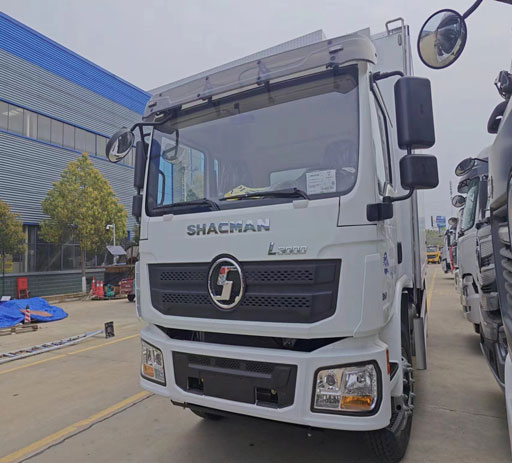A Crane Must Be on Firm Ground and Level: A Comprehensive Guide

Introduction
Working with cranes is a critical aspect of construction, warehousing, and heavy lifting industries. Understanding that a crane must be on firm ground and level is vital for ensuring safety and efficiency during any lifting operation. This article delves deep into why this principle is essential, how to achieve it, practical tips for operators, and much more. By the end, you will have a thorough understanding of the importance of stability in crane operations, ensuring every lift is safe and efficient.
Understanding Crane Stability
The Basics of Crane Stability

Crane stability is influenced by a combination of the crane’s design, the ground conditions, and the load being lifted. A stable crane minimizes the risk of tipping, which can result in accidents and loss of life. Stability is essential, and achieving it requires proper planning and execution.
Types of Cranes and Their Stability Requirements
Different types of cranes have varying stability requirements due to their design and operation:
- Mobile Cranes: Require a level surface and are often equipped with stabilizers to increase stability during operation.
- Tower Cranes: Fixed to the ground, must be anchored properly to handle large loads.
- Crawler Cranes: Have a wide footprint that enhances ground contact and stability.
- Overhead Cranes: Typically use bridge systems that distribute weight across a larger area.
The Importance of Firm Ground
What Constitutes Firm Ground?
Firm ground refers to solid and stable surfaces, devoid of loose soil or debris. It can be gravel, asphalt, concrete, or another non-saturated material. Soil that is unstable or muddy can lead to crane sinking or shifting, compromising stability.
Evaluating Ground Conditions
Before operating a crane, it’s essential to evaluate the ground conditions thoroughly. Here are some methods:
- Soil Testing: Conduct tests to determine the type and load-bearing capacity of the soil.
- Visual Inspection: Look for signs of settling, cracking, or excessive moisture.
- Consulting Geotechnical Engineers: Consider professional evaluation if unsure about ground conditions.
Leveling a Crane
The Importance of Leveling a Crane
Leveling a crane is crucial to prevent uneven weight distribution. An unlevel crane can lead to tipping, sliding, and accidents, especially when lifting heavy loads.
How to Level a Crane
Follow these steps to level a crane effectively:
- Use Leveling Tools: Employ spirit levels or laser levels to check the crane’s position.
- Adjusting Outriggers: Extend and adjust outriggers or stabilizers until the crane is level.
- Check Load Position: Ensure that the load is centered and doesn’t exceed the crane’s capacity.
Practical Examples of Crane Usage
Construction Sites
On construction sites, cranes are used frequently to lift heavy materials. For example, tower cranes are often employed to raise steel beams to various floors of a building. Ensuring these cranes are level and on firm ground is paramount to avoid dangerous tipping.
Warehouse Operations
Cranes used in warehouses often lift pallets of goods. Ensuring the ground is level and firm prevents unintended accidents when the crane shifts under heavy loads. An example includes using a mobile crane for loading containers, where uneven ground can lead to load swing and potential damage.

Practical Tips for Crane Operators
Pre-Operation Checks
Before operating a crane, always conduct thorough checks:
- Inspect the crane components, including cables and pulleys.
- Verify that safety devices are functional.
- Confirm the lifting plan is accurate and approved.
Ongoing Monitoring
Once the crane is in operation, continuously monitor:
- Observe for any signs of ground settling or instability.
- Communicate regularly with ground crews for updates on conditions.
- Ensure load is lifted slowly to maintain control.
Technology in Crane Operations
Advanced Leveling Systems
Modern cranes often come equipped with technology that aids in leveling, such as:
- Automated Leveling Systems: Automatically adjust for level ground conditions.
- Visual Display Systems: Provide real-time feedback on level and stability.
- Geolocation Technology: Helps identify and evaluate ground conditions remotely.
Training and Certification
Proper training is essential for crane operators. Regular training courses ensure that operators are updated on the best practices and new technologies that facilitate safe operations.
Legal and Regulatory Considerations
Safety Regulations
Crane operations are governed by various safety regulations, including OSHA (Occupational Safety and Health Administration) in the U.S. Compliance with these regulations is mandatory and includes maintaining firm ground conditions and ensuring proper leveling.
Insurance and Liability
Inadequate practices can lead to significant financial liability, including insurance claims. Companies must maintain detailed records of crane inspections, operator training, and daily maintenance routines to mitigate risk.
Frequently Asked Questions (FAQs)
1. Why is it essential for a crane to be on firm ground?
A crane on firm ground reduces the risk of tipping, sinking, and accidents, ensuring safety during lifting operations.
2. How can I check if the ground is suitable for crane operations?
Assess the ground through visual inspections, soil testing, and consultations with geotechnical engineers.
3. What tools are necessary for leveling a crane?
Spirit levels, laser levels, and hydraulic jacks or outriggers are essential tools for accurately leveling a crane.
4. What are the signs of an unlevel crane?

Signs of an unlevel crane include uneven load distribution, visible tilting, and excessive movement during operation.
5. Can weather conditions affect crane stability?
Yes, adverse weather conditions, such as heavy rain, can saturate the ground, impacting stability.
6. Who is responsible for crane safety on a job site?
The crane operator is primarily responsible, but it is also a shared responsibility with contractors, site managers, and safety personnel.
Conclusion
Understanding that a crane must be on firm ground and level within is not just a guideline but a crucial factor in ensuring safe crane operations. By implementing the strategies and practices outlined in this article, you can help minimize risks and enhance the safety and efficiency of crane lifting operations.
